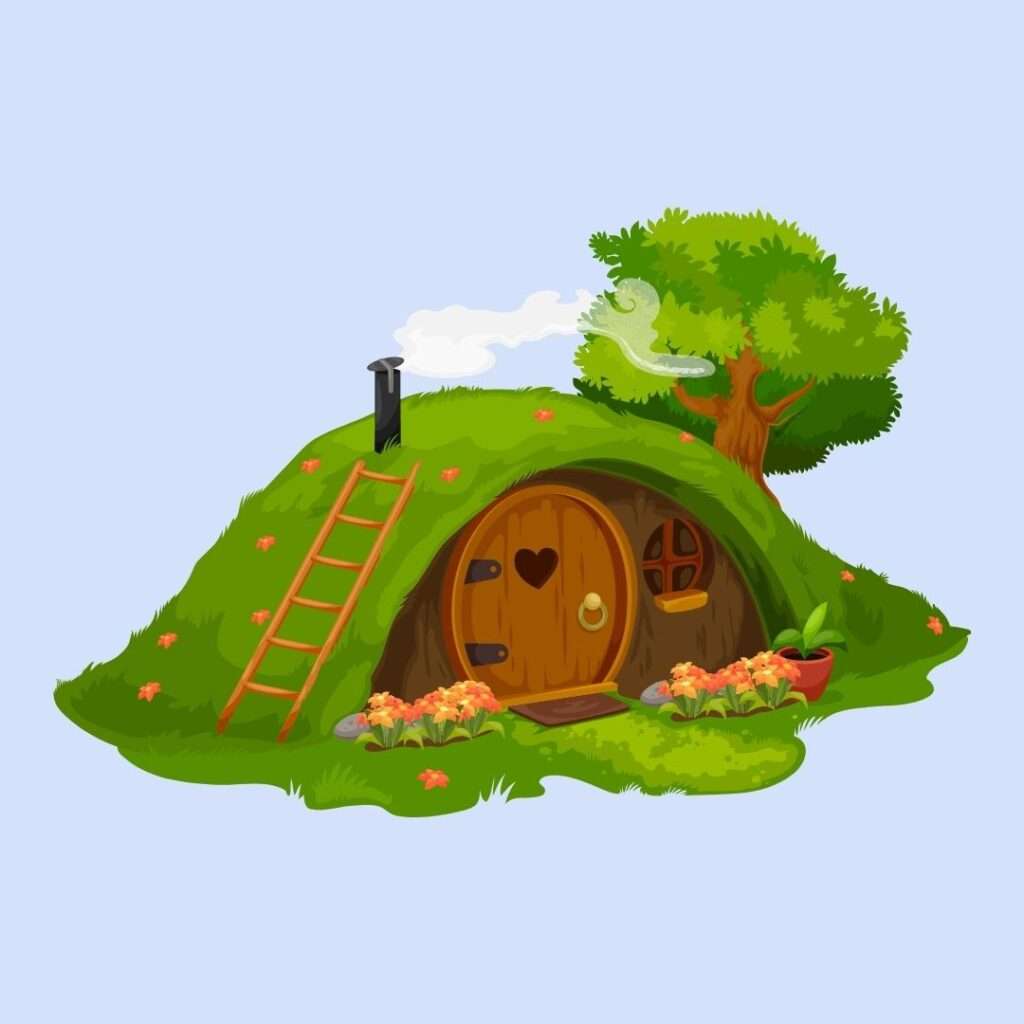Table of Contents
- Introduction
- Understanding Tolkien’s Writing Style
- Embracing Creativity and Imagination
- Crafting Epic Narratives and Characters
- Conclusion
Introduction
In fantasy literature, few names shine as brightly as J.R.R. Tolkien. This legendary writer is renowned for his unique writing style and unparalleled world-building abilities. Tolkien’s works, such as The Lord of the Rings and The Hobbit, have captivated readers for generations, transporting them to the enchanting lands of Middle-earth.
What about Tolkien’s writing makes it so timeless and appealing? Perhaps it’s how he crafts intricate languages, brings mythical creatures to life, or weaves epic tales of heroism and adventure. Or maybe the sense of wonder and magic permeates every page, inviting readers to lose themselves in a world where anything is possible.
If you’ve ever dreamed of creating your fantastical realm, filled with rich history, fascinating characters, and thrilling quests, it’s time to unlock your inner Tolkien. By studying the master’s techniques and embracing your creativity, you, too, can embark on a journey to become a skilled fantasy writer.
This write-up explores the key elements of Tolkien’s writing style, from his meticulous world-building to his memorable characters. We’ll also delve into the importance of imagination and the art of crafting epic narratives. So, grab your pen and paper, and get ready to unleash your inner storyteller as we learn the craft of writing like J.R.R. Tolkien.
Understanding Tolkien’s Writing Style
J.R.R. Tolkien’s writing style is rich in world-building, intricate languages, and detailed character development. The Lord of the Rings and The Hobbit transport readers to the enchanting realm of Middle-earth, where every detail breathes life into the story.
Tolkien’s approach to world-building is unparalleled. He crafts intricate histories, mythologies, and cultures for each race and region in his fictional universe. From the ethereal elves to the stout-hearted dwarves, every civilization has its unique customs, traditions, and conflicts. Tolkien’s meticulous attention to detail creates a sense of depth and authenticity that immerses readers in his fantastical world.
The Influence of Mythology, Folklore, and History
Mythology, folklore, and history are vital in shaping Tolkien’s narratives. He draws inspiration from ancient tales, such as the Norse sagas and the Finnish epic Kalevala, to create a rich tapestry of legends and lore within his works. Tolkien’s deep knowledge of these sources allows him to weave familiar archetypes and themes into his stories, giving them a timeless quality that resonates with readers across generations.
Moreover, Tolkien’s love for history is evident in his writing. He incorporates elements of medieval European history, such as chivalry and the struggles between good and evil, into his tales. This historical influence adds a layer of realism and gravitas to his fantasy world, making it feel familiar and enchanting.
The Philologist’s Approach to Language and Storytelling
As a philologist, Tolkien was profoundly fascinated with language. He created intricate languages for the various races in his world, each with its grammar, vocabulary, and script. The Elvish languages, such as Quenya and Sindarin, are prime examples of Tolkien’s linguistic prowess. These languages are not mere embellishments; they are integral to the fabric of his stories, reflecting the culture, history, and values of the characters who speak them.
Tolkien’s love for language also shapes his prose. He employs a rich, descriptive style that paints vivid pictures in the reader’s mind. His sentences are often long and flowing, with a cadence that evokes the rhythm of ancient epics. Tolkien’s use of language is not just beautiful; it is purposeful and carefully crafted to create a sense of grandeur and poetry that elevates his stories to the realm of myth and legend.
By understanding Tolkien’s writing style, aspiring writers can learn valuable lessons in world-building, character development, and the power of language. Embracing the richness of mythology, folklore, and history and applying a philologist’s eye to crafting words can help writers create immersive and enchanting tales that captivate readers’ hearts and minds.
In the next section, we will explore how to embrace creativity and imagination in your writing, drawing inspiration from Tolkien’s boundless inventiveness.
Embracing Creativity and Imagination
To unlock your inner Tolkien and create captivating stories, embrace your creativity and let your imagination run wild. Tolkien’s works are a testament to the power of unbridled imagination, and by tapping into your creative well, you can craft unique and enchanting tales that transport readers to new worlds.
One of the hallmarks of Tolkien’s writing is the creation of rich, immersive cultures, languages, and landscapes. Middle-earth, with its diverse races, intricate histories, and fascinating languages, is a shining example of the depth and complexity that can be achieved through imaginative world-building.
When crafting your own stories, consider the significance of developing unique cultures with their customs, beliefs, and ways of life. By investing time and effort into building these elements, you can create a sense of authenticity and believability that will draw readers deeper into your fictional realm.
Similarly, the invention of languages played a crucial role in Tolkien’s world-building process. As a philologist, Tolkien understood the power of language to shape cultures and define identities. While you may not need to create entire languages from scratch, incorporating unique phrases, names, or linguistic quirks can add depth and immersion to your storytelling. Don’t be afraid to experiment with language; let your creativity guide you in crafting distinctive dialogues and vocabulary.
To cultivate a sense of wonder and magic in your writing, take inspiration from Tolkien’s fantastical settings. Middle-earth is filled with enchanted forests, majestic mountains, and mythical creatures that ignite the imagination.
When describing your fictional landscapes, consider the details that make them come alive. Use vivid sensory descriptions to paint a picture in your readers’ minds, and don’t shy away from incorporating elements of magic or the supernatural. Remember, the key is to create a sense of awe and mystery that will keep readers engaged and eager to explore your fictional world.
Here are some tips to help you embrace your creativity and craft imaginative stories:
- Keep a journal or notebook to jot down ideas, descriptions, and snippets of dialogue whenever inspiration strikes.
- Engage in worldbuilding exercises, such as creating maps, histories, or character profiles, to flesh out your fictional universe.
- Read widely, not just within your favorite genre, to expose yourself to diverse ideas and storytelling techniques.
- Allow yourself to experiment and take risks in your writing, even if it means venturing into uncharted territory.
- Seek feedback from trusted readers or writing groups to gain fresh perspectives and refine your imaginative ideas.
By embracing your creativity and letting your imagination soar, you can unlock the door to crafting stories as captivating and immersive as Tolkien’s beloved works. So, don’t be afraid to dream big, explore the depths of your creativity, and bring your unique visions to life on the page.
Crafting Epic Narratives and Characters
J.R.R. Tolkien’s works are renowned for their epic narratives and unforgettable characters. To unlock your inner Tolkien and create stories that captivate readers, it’s essential to delve into the art of crafting complex plots, surprising twists, and overarching themes that resonate with your audience.
One of the hallmarks of Tolkien’s writing is his ability to weave intricate storylines that keep readers engaged from start to finish. When crafting your epic narrative, consider developing multiple plot threads that intertwine and converge at crucial moments. This approach adds depth and complexity to your tale, ensuring readers remain invested in your characters’ journeys.

Speaking of characters, Tolkien’s iconic figures, such as Frodo Baggins, Gandalf, and Aragorn, have become beloved by readers worldwide. To create memorable characters like these, focus on giving them depth, growth, and moral dilemmas that challenge them throughout the story. Consider how your characters’ backgrounds, motivations, and relationships shape their actions and decisions. Use these elements to create dynamic and relatable figures that readers can connect with on an emotional level.
As you develop your epic narrative, don’t be afraid to introduce subplots that enrich the main storyline. Tolkien masterfully wove together multiple threads, such as the quest to destroy the One Ring and the personal struggles of individual characters, to create a cohesive and engaging narrative tapestry. By carefully planning and integrating subplots, you can add layers of meaning and complexity to your story, keeping readers invested in the overall arc of the tale.
Balancing the various storylines and character arcs is crucial to ensure that your epic narrative remains cohesive and engaging. Regularly revisit your overarching themes and consider how each subplot and character development contributes to the larger picture. By keeping a keen eye on the interconnectedness of your narrative elements, you can create a story that feels both grand in scope and intimately personal.
As you craft your epic narrative and memorable characters, remember to draw inspiration from Tolkien’s works while bringing your unique voice and perspective. Embrace the challenge of creating a story that transports readers to new worlds and immerses them in the lives of your characters, and you’ll be well on your way to unlocking your inner Tolkien.
Conclusion
As we end our journey exploring the craft of writing like J.R.R. Tolkien, it’s time to reflect on the key takeaways and how you can apply them to your writing. Throughout this write-up, we’ve delved into Tolkien’s unique writing style, the importance of creativity and imagination, and the art of crafting epic narratives and characters.
One of the most crucial lessons we can learn from Tolkien is the power of world-building. By creating rich, immersive settings filled with diverse cultures, languages, and histories, Tolkien transported readers to a realm of wonder and adventure. As you embark on your writing journey, don’t be afraid to let your imagination run wild. Embrace the freedom to create unique worlds that captivate and inspire your readers.
Another essential aspect of Tolkien’s writing is his ability to craft complex, relatable characters. From the brave hobbits of the Shire to the wise wizards and noble elves, Tolkien’s characters are more than just fictional creations; they become cherished companions to readers. As you develop your characters, strive to imbue them with depth, growth, and moral complexity. Allow them to face challenges, make difficult decisions, and evolve throughout the narrative.
Remember, the path to unlocking your inner Tolkien is not about imitation but rather inspiration. Tolkien’s legacy serves as a guiding light, encouraging you to find your unique voice and style. Experiment with different genres, themes, and narrative structures. Take risks and push the boundaries of your creativity. The beauty of writing lies in the endless possibilities it offers.
As you embark on your writing journey, armed with the insights and inspiration from Tolkien’s craft, remember that the power to create epic tales lies within you. Embrace the magic of storytelling and let your imagination soar. Whether you’re penning a short story, a novel, or a series of epic proportions, the key is to pour your heart and soul into your writing.
So, dear reader, the time has come to pick up your pen and embark on your literary adventure. Let the wisdom of Tolkien guide you as you craft worlds, characters, and narratives that will captivate and inspire generations to come. The road ahead may be filled with challenges and uncertainties. Still, with dedication, passion, and a touch of magic, you can unlock your inner Tolkien and leave an indelible mark on the world of literature.
Start writing today, and let your unique voice be heard. The realm of storytelling awaits; the blank page before you is your canvas. Fill it with the colors of your imagination, the depths of your emotions, and the wonders of your creativity.

1 thought on “How to Write Like J.R.R. Tolkien”